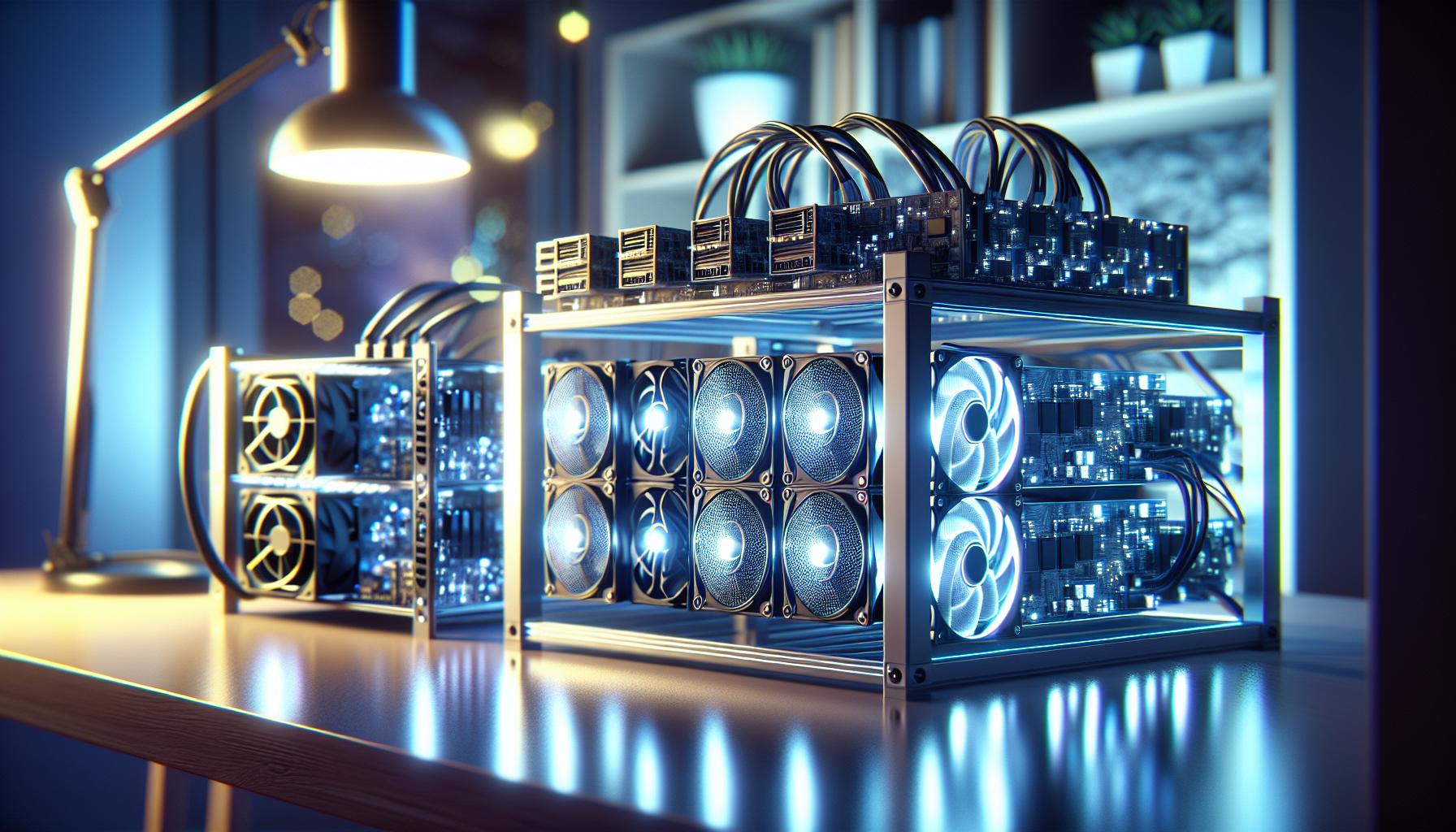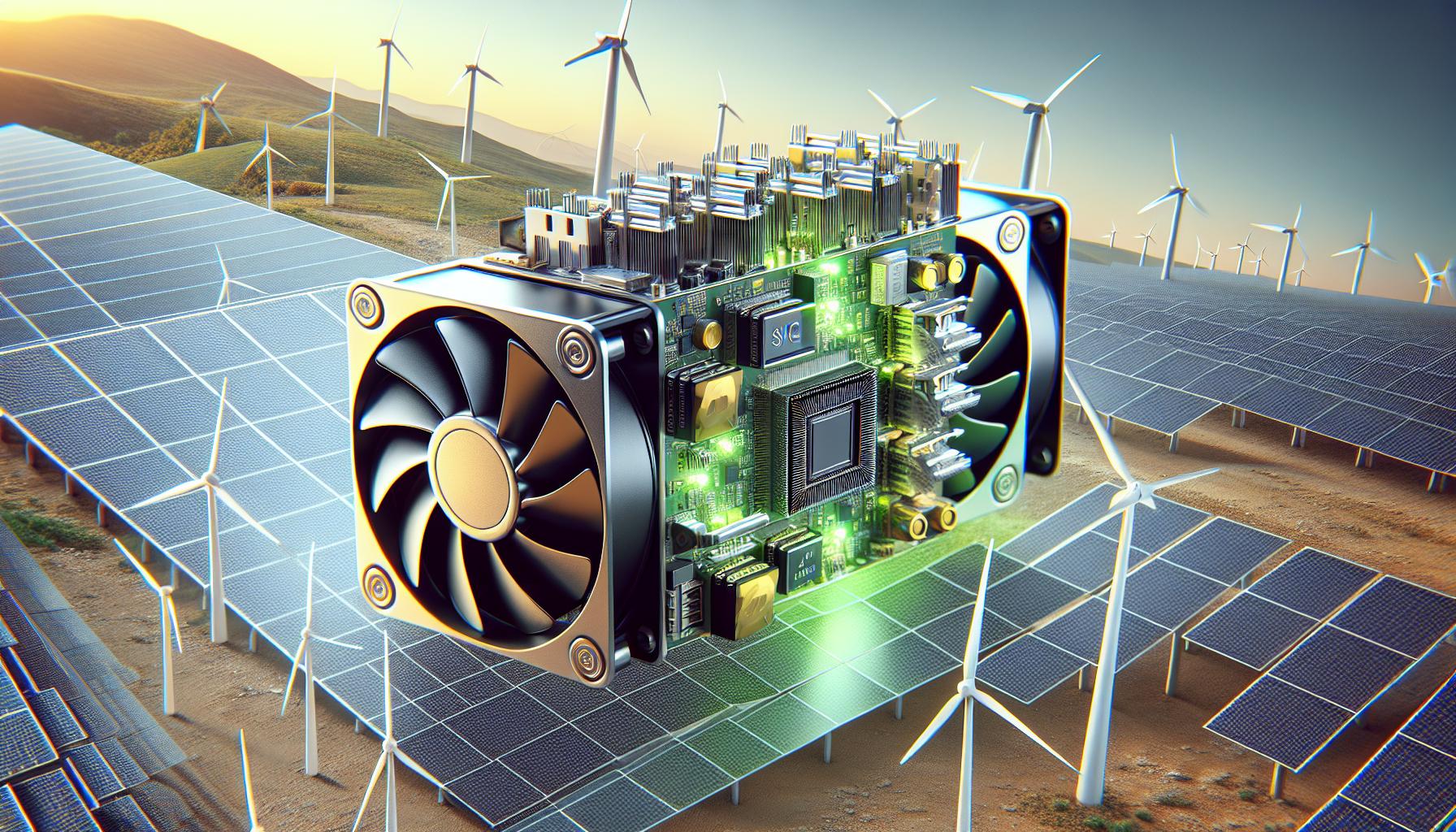The cryptocurrency mining hardware market is booming, and it’s capturing the attention of tech enthusiasts and investors alike. With the rise of digital currencies like Bitcoin and Ethereum, the demand for efficient and powerful mining equipment has surged. I’ve watched as this niche market evolves, fueled by advancements in technology and the growing interest in decentralized finance.
As more people dive into cryptocurrency mining, understanding the hardware landscape becomes crucial. From ASIC miners to GPUs, each type of equipment offers unique advantages and challenges. I’m excited to explore the current trends, key players, and future prospects of this dynamic market, shedding light on what it takes to succeed in the world of crypto mining.
Key Takeaways
- The cryptocurrency mining hardware market is rapidly expanding, driven by the increasing popularity of digital currencies like Bitcoin and Ethereum.
- Key types of mining hardware include ASIC miners, known for high efficiency; GPU miners, valued for versatility; and FPGA miners, which offer a balance of efficiency and flexibility.
- Major players in the market, such as Bitmain, MicroBT, NVIDIA, and AMD, are continuously innovating to improve mining equipment’s performance and energy efficiency.
- Technological advancements are crucial for enhancing mining hardware capabilities, focusing on energy efficiency and processing power, which is vital for profitability.
- Environmental considerations are becoming increasingly significant, as miners and manufacturers explore greener alternatives to reduce carbon footprints.
- Regulatory issues and supply chain disruptions pose challenges to the market, affecting hardware availability and pricing, requiring miners to remain adaptable.
The Cryptocurrency Mining Hardware Market
The cryptocurrency mining hardware market has seen remarkable growth, fueled by the surging interest in Bitcoin, Ethereum, and other digital currencies. Demand for efficient equipment is paramount, leading to innovation and a variety of options that cater to miners’ specific needs.
The landscape includes two primary types of mining hardware: ASIC miners and GPUs. ASIC miners, designed specifically for cryptocurrency mining, offer superior efficiency and speed. GPUs, often used for gaming, provide versatility for mining multiple cryptocurrencies. Each type of hardware has distinct advantages, depending on the mining strategy and desired outcomes.
Several factors drive the evolution of this market. Energy efficiency has become critical as the costs associated with mining operations increase. Miners are increasingly adopting specialized hardware that balances performance with energy consumption. Moreover, the regulatory environment impacts hardware availability and pricing dynamics.
Key players in the cryptocurrency mining hardware space include companies like Bitmain, MicroBT, and NVIDIA. These manufacturers invest in research and development to create cutting-edge solutions, ensuring their offerings remain competitive in a rapidly changing landscape. As miners aim to maximize profits, they often assess aspects such as hash rates and return on investment when selecting hardware.
The future of the cryptocurrency mining hardware market looks promising. As blockchain technology matures, new developments in hardware will likely emerge. Miners who adapt to these advancements stand to gain significant advantages. Understanding the current market trends and players can provide insights into this evolving industry.
Types Of Cryptocurrency Mining Hardware

Understanding the types of cryptocurrency mining hardware is crucial for making informed investment decisions. The primary categories include ASIC miners, GPU miners, and FPGA miners, each serving specific needs and purposes within the mining ecosystem.
ASIC Miners
ASIC (Application-Specific Integrated Circuit) miners dominate the cryptocurrency mining market due to their high efficiency and processing power. These devices are engineered specifically for mining algorithms, offering unparalleled hash rates and energy efficiency. For example, units like the Antminer S19 Pro and the Whatsminer M30S produce hash rates exceeding 100 TH/s, making them ideal for Bitcoin mining. While ASIC miners provide significant advantages in terms of performance, their lack of versatility limits compatibility with only specific coins, creating a dependency on the market for those currencies.
GPU Miners
GPU (Graphics Processing Unit) miners are popular for their flexibility in mining a variety of cryptocurrencies. Unlike ASIC miners, GPUs can mine multiple coins, making them suitable for users looking to diversify their mining operations. GPUs from manufacturers like NVIDIA and AMD, such as the GeForce RTX 3080 and Radeon RX 5700 XT, offer excellent performance with hash rates around 50 MH/s for Ethereum mining. The market for GPUs is influenced by factors like gaming demand, which can affect availability and pricing. Mining enthusiasts often favor GPU rigs due to their scalability and adaptability to changing market conditions.
FPGA Miners
FPGA (Field-Programmable Gate Array) miners combine the efficiency of ASICs with the flexibility of GPUs. These devices allow for customization of hardware to differ mining algorithms, giving users an edge in adapting to market changes. FPGA units can achieve competitive hash rates while consuming less power than traditional GPUs. Though the initial setup cost can be higher compared to GPUs, the potential for increased profitability through optimized mining makes them an attractive option. Miners often leverage FPGA technology for coins requiring unique algorithms, which are less commonly targeted by ASIC miners.
Major Players In The Market

The cryptocurrency mining hardware market features a mix of established leaders and emerging brands, each contributing to the industry’s growth and innovation. Understanding these players showcases the competitive landscape shaping the future of crypto mining.
Leading Manufacturers
- Bitmain: Bitmain dominates the ASIC miner sector with its Antminer series. This company invests heavily in R&D, offering miners efficient options for Bitcoin and other ASIC-friendly coins. Its strong market presence ensures ongoing advancements in mining technology.
- MicroBT: MicroBT, known for its Whatsminer series, focuses on optimizing performance and power efficiency. The company’s products feature competitive hashing rates, appealing to both novice and experienced miners. MicroBT’s dedication to innovation enhances its reputation in the market.
- NVIDIA: NVIDIA plays a crucial role in the GPU mining hardware segment. Its GPUs are favored for their high performance in mining various cryptocurrencies. The company’s investments in AI and computing technologies further bolster its capabilities in the mining ecosystem.
- AMD: AMD complements NVIDIA in the GPU market, providing powerful hardware that supports multiple algorithms. Its Radeon series offers versatility for miners seeking to maximize efficiency in mining operations.
- Canaan Creative: Canaan, another ASIC manufacturer, produces the Avalon series. This brand emphasizes reliability and performance, catering to the needs of serious Bitcoin miners while continuously adapting to market demands.
- StrongU: StrongU specializes in ASIC miners designed for various cryptocurrencies, including Bitcoin. This brand positions itself as a cost-effective option for miners seeking efficiency without significant investment.
- Innosilicon: Innosilicon focuses on producing high-performance ASIC miners with a strong emphasis on energy efficiency. The company’s innovative designs attract a growing customer base looking for advanced mining solutions.
- Ebang: Ebang manufactures ASIC miners and offers various hardware solutions tailored for cryptocurrency mining. The company’s ongoing developments focus on improving hashing efficiency and lowering power consumption.
- Avalon: Avalon, although not one of the largest names, steadily gains traction with its cost-effective and efficient mining solutions. This emerging brand targets first-time miners and investors interested in entering the cryptocurrency space.
- Goldshell: Goldshell produces compact and user-friendly mining rigs designed for hobby miners. Its focus on simplicity and ease of use attracts those interested in mining as a side venture rather than a full-scale operation.
Market Trends And Innovations

The cryptocurrency mining hardware market is evolving rapidly, driven by technological advancements and increasing environmental awareness. These trends not only shape current market dynamics but also dictate future innovations.
Technological Advancements
Technological advancements significantly impact mining hardware efficiency and capability. Innovations in ASIC designs improve power consumption and processing speed. Manufacturers like Bitmain and MicroBT continuously refine their designs to enhance performance per watt, maximizing profitability for miners. GPU technology is also advancing, with newer models such as NVIDIA’s RTX series providing increased hash rates and energy efficiency. Furthermore, the integration of artificial intelligence in mining operations streamlines task allocation and reduces costs, creating a competitive edge for adaptable miners.
Environmental Considerations
Environmental considerations play a crucial role in the cryptocurrency mining hardware market. As energy consumption becomes a major concern, miners seek out greener alternatives. Companies are exploring renewable energy sources, like solar and wind power, to mitigate carbon footprints. Regulatory bodies are pushing for greater transparency and sustainability in the industry, prompting hardware manufacturers to produce energy-efficient solutions. Evaluation of hardware energy efficiency has become a priority for miners considering investments, ensuring compliance with environmental standards and optimizing operational costs.
Challenges Facing The Market
The cryptocurrency mining hardware market encounters several challenges that impact its growth and stability. Regulatory issues and supply chain disruptions stand out as significant obstacles, affecting manufacturers and miners alike.
Regulatory Issues
Regulatory issues present a considerable challenge in the cryptocurrency mining hardware market. Governments across various regions enforce varying regulations regarding cryptocurrency mining, often leading to uncertainty. Regulations may include strict licensing requirements, environmental impact assessments, and taxation policies. For example, China has implemented a comprehensive ban on cryptocurrency mining, causing manufacturers and miners to seek more favorable jurisdictions. This regulatory landscape influences the availability and price of mining hardware. Miners must navigate these complexities to ensure compliance and continue operations without interruptions.
Supply Chain Disruptions
Supply chain disruptions significantly impact the availability and cost of mining hardware. The global semiconductor shortage affects manufacturers, leading to delays in production and delivery. As demand for mining equipment surges, shortages of essential components increase prices. For instance, the demand for ASIC miners has outstripped supply, resulting in inflated market prices and longer wait times for consumers. Additionally, geopolitical tensions and logistical challenges can hinder the flow of materials required for hardware production. Miners must adapt to this evolving landscape, remaining vigilant about potential delays and fluctuations in hardware costs.
Cryptocurrency Mining
The cryptocurrency mining hardware market is evolving rapidly and presents both challenges and opportunities. As I observe the trends and innovations, it’s clear that adaptability will be key for miners looking to thrive in this competitive landscape.
With advancements in technology and a growing emphasis on energy efficiency, the future looks bright for those willing to invest in the right equipment. Staying informed about the latest developments and understanding the unique advantages of different hardware types can empower miners to make strategic decisions.
As the market continues to mature, I’m excited to see how these dynamics unfold and shape the future of cryptocurrency mining.